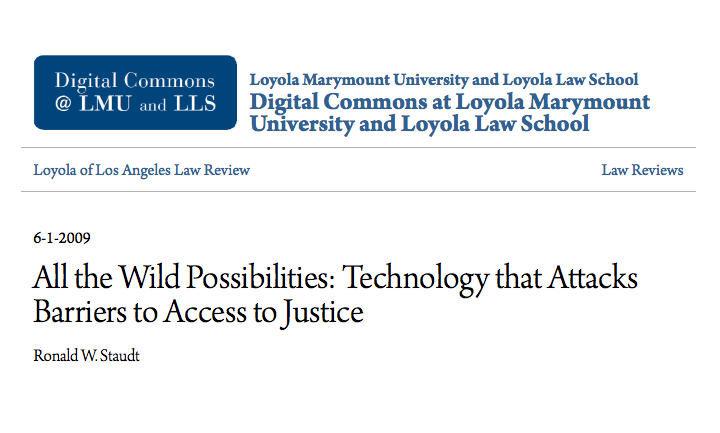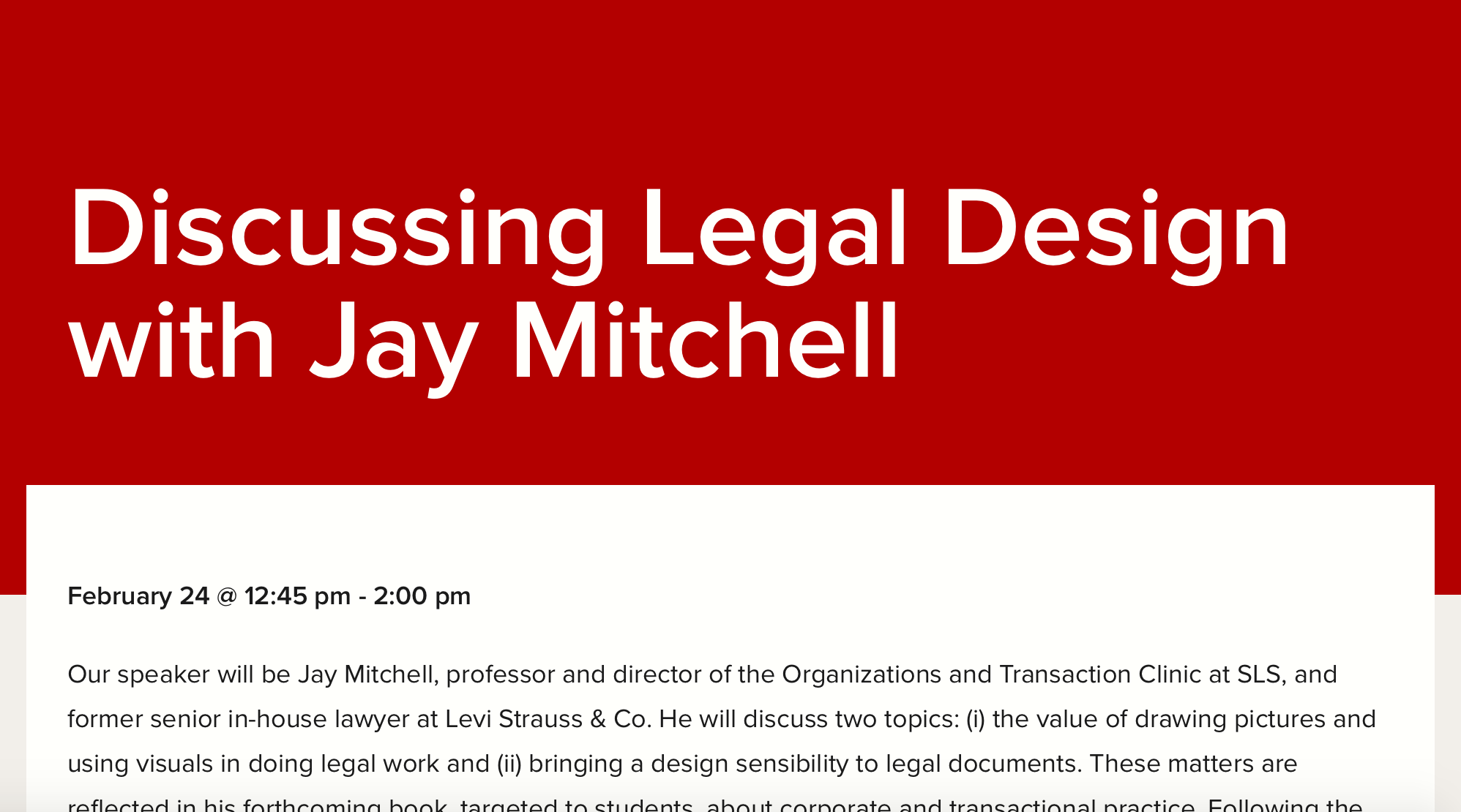
Mitchell, Jay A., Putting Some Product into Work-Product: Corporate Lawyers Learning from Designers (September 22, 2013).
Stanford Law Professor Jay Mitchell, director of the Transactions Clinic there, has published a working paper about design principles for lawyers. His argument — which I find immensely persuasive — is that corporate lawyers are constantly designing products, in the form of documents, and that there is huge potential here for more designerly approaches to these designs.
His work itself abides by these principles, adhering to forward & spacious composition.
He calls out some aspects of Document Design that a corporate lawyer should consider as she composes a document — each of these factors are open for redesign, with an eye to what user will be using it, and what they will be using it for.
- The Content of the Document
- The Organization of the Content
- The Form & Composition of its presentation
- The Typography it’s laid out in
He also presents a great short reading list for those lawyers interested in innovating how we communicate to our clients, and give them documents that they can use in their work.
From his work at Stanford, he has examples of redesigned corporate documents, made for non-profit clients of the clinic. The documents have been designed consciously to be more usable, and clearer.


Here is the working paper’s official abstract:
Clients hire corporate lawyers to make useful things for them. Those things are documents, such as contracts and corporate bylaws. Lawyers have some good tools for making these products; standard forms and precedents from prior engagements are prime examples. But corporate lawyers don’t seem to use other tools whose employment might contribute to the utility and value of the product for the client. Those tools, used by designers, include a stance toward the work focused on the reader and actual user experience, and an attention to typography, to facilitating communicative effectiveness through careful attention to the presentation of text. This paper reflects some work by corporate lawyers trying to learn from designers, their work-products, and their literature, in creating legal documents for clients. The materials considered here are governance documents for nonprofit corporations. The paper notes several themes emerging from the literature study, explains why governance materials are a good vehicle for this work, characterizes typical executions of those materials, describes in detail and provides examples of the documents we developed, and makes a few observations about continuing work in the area. The work here is early-stage. As designers might say, we’re doing ideation and prototyping. But we do think the work is suggestive of how even modest awareness of design considerations can make our work-products better products for our clients.


